9/08-9/25
983.61 km from Canterbury
After leaving my parents in Milan, I took a long train ride back up to Paris and then took a detour on my way back to Bar-sur-Aube by way of Troyes. I had wanted to visit this medieval town ever since I read Life in a Medieval City by Frances and Joeseph Gies. It didn't disappoint!
 |
| Many of the old timber-framed houses |
Troyes was first built in Roman times along the river Seine. It flourished in 12th and 13th centuries when it was the site of one of the famous "Champagne fairs" held twice a year in eastern France. Each one lasted about a fortnight and Troyes would raise temporary shelters for merchants from all over Europe. The town, which was home to under 20,000 people, welcomed over a thousand visitors during these fairs! Later, in the 15th and 16th centuries, Troyes' art schools flourished, and the town was well known for its painting, sculpture and stained glass.
First things first I dropped my bag at the municipal campsite, pitched my tent and headed into town. I visited the Vauluisant museum first which is housed in a beautiful 16th century stone mansion and contains the Troyes history and hosiery museums.
 |
| Gorgeous 16th century stone mansion |
The woodwork on displayed was mostly salvaged from the exterior of Troyen houses. There was a whole room filled with intricately decorated wooden paneling and carved wooden beams.
 |
| Wood paneling from a house |
You could tell that artists had fun and experimented with the art on the ends of the wooden beams used in buildings. There were the usual faces and animals... as well as the man showing off his bare butt and the demon staring wild-eyed at passerby!
 |
| Watch out below |
 |
| Monkey on a lease |
 |
| St Jacques |
During the 15th and 16th centuries, Troyes boasted a famous stained glass school, and there were many examples of beautiful Troyen stained glass. It's not often you get to see authentic stained glass intact and this close!
 |
| Myriad of faces |
The hosiery museum finished the tour, and while it was interesting, I found that a quick walk through was all I needed!
 |
| Ergonometric seating design |
Exiting the Vauluisant museum, I walked around the historic center of Troyes. The old town is shaped like a champagne cork having acquired its odd shape from the bends in the Seine. The city center was amazing! It was filled with tight crooked streets jetting off from each other in a haphazard manner, each one lined by wood-framed houses. There were tiny narrow alleys lined by old houses leaning so far over they almost form an A-frame!
 |
| Some awesome in-situ woodwork! |
Chat alley was one gloriously medieval alley (in both the literal sense of the word as well as in the romantically derogatory sense of the word). It was nicknamed "cat alley" since the houses on either side leaned so far over that cats would easily flit from house to house.
 |
| Fitting sculpture |
There are a plethora of churches in the mid-sized town, and after visiting the cathedral and two others, I decided against visiting more as they seemed almost redundant at that point!
Walking around Troyes was a feast for the eyes, and I fell in love with the little wood timbered town. Alas, time was running short, and I had to return to my pilgrimage. So, after a day of exploring Troyes, I returned to Bar-sur-Aube-- that tiny town from which I left my prescribed route so long ago.
 |
| Goodbye Troyes |
The next day I took a train back to Bar-sur-Aube and recommenced my walking. I'll admit it was a bit depressing returning to the wooded flat farmlands of France, especially as it was still so hot!!
 |
| Leaving the Aube for a short while |
 |
| The French town of Baroville |
 |
| French pilgrims I would meet two days later in Chateauvillain!! |
From Bar-sur-Aube I crossed through a small forest and in the afternoon I passed by the famous Cistercian abbey of Clairvaux!
 |
| The entrance to Clairvaux |
The famous abbey of Clairvaux was founded by a man named Bernard in 1115. When Bernard began the Cistercian order, he envisioned a religious order that was intensely trying, austere and spartan. Despite this rigorous lifestyle, the abbey of Clairvaux flourished. Today, the existing buildings of Clairvaux serve a different, yet eerily similar function. I found it somewhat ironic that the Cistercian abbey is now the site of high-security prison!!
 |
| The Abbey of Clairvaux |
 |
| On-site chapel |
I stopped in the tourist office inside the complex and was directed to a small room with an exhibition on the Via Francigena! There were pictures of Sigeric's pilgrimage journal as well as watercolor paintings of different buildings and sights along the route.
 |
| Photocopies of Sigeric's original journal |
Usually, there is accommodation for pilgrims in a house at Clairvaux. Its primary function is to house visiting relatives of the inmates. I was told it was all full and that I wouldn't be able to stay, so I planned to continue walking past the next town and find a place to pitch my tent there.
Before leaving Clairvaux, though, I stopped outside the prison for lunch and met a lovely Frenchman named Pierre. Pierre had a fascinating story to tell. He had been a doctor for thirty years and after he retired he started working for the church. During his service, he began working with prisoners. Pierre then told me that he had been working with one man for seven years! That very day Pierre sat talking to me he had brought the prisoner's brother from Jamaica to visit him! This was the first time the man had seen anyone from his former life in those seven years! Pierre had been present for the brothers' meeting in the morning which had been an extraordinarily emotional but rewarding experience. That afternoon Pierre was letting the two brothers visit in private so that they could have some time alone.


Leaving Pierre, I continued walking along farmlands until I found a good place to camp. It was strange being back in the moderately flat farmlands of France after the glorious mountainous alps. I was very excited to continue south and discover for myself how the broad farms transformed into the foothills of the alps!
 |
| Farmhouse on the Aube |
The next day I reached the small town of Chateauvillain. This seemingly unremarkable town had a few medieval remnants in the forms of a chateau (really though, it was a manor), a few towers and a gate that exited into a forest that reminded me of the hunting grounds of Compiegne.
 |
| The château |
On my way into the town, I met an American-Swiss man named Jeff. He was walking from Switzerland to Canterbury in the opposite direction and had completed the Italian portion with his daughter a few years earlier. Jeff had been born in America but moved to Switzerland to play basketball when he was in his early twenties. He had then remained in Switzerland with his wife for forty years, the last twenty-five working as a pastor. It was lovely meeting another English speaker, and Jeff and I had a great conversation at the local brasserie.
We stayed that night in the town's pilgrim accommodation, a flat on the edge of town with several rooms, a bathroom and a kitchen. Seven pilgrims stayed that night!! It was incredible I hadn't seen so many pilgrims in one place! There were a young French couple and an older Dutch couple (all of whom were walking the Via Francigena) as well as a young German who was walking the Santiago de Compostela route. We all were able to communicate moderately well- Jeff very well since he was fluent in several languages- and it was such a pleasant experience to meet so many other pilgrims.
 |
| Pilgrim shoes airing out |
The next day I exited Chateauvillain through its forest gate and spent the morning walking through the park area. The park still carried the characteristics of a 17th-century hunting ground with well-maintained and orderly avenues branching off from regular clearings. The area was very reminiscent of Compiegne. It was a lovely morning, and I ended up passing by several of the pilgrims I had spent the night within Chateauvillain.
 |
| It is finally Fall |
 |
| Little roadside shelter in the woods |
I ended up camping in the woods that night which was much more pleasant than the last time I camped in the woods. Last time the ground had been muddy then heavily rutted then dried so it could hardly be called comfortable-- also there were scary alien animal noises throughout most of the night!
 |
| Walking... |
 |
| Where'd that tree come from? |
One of my favorite pastimes along this section of the route was finding farm animals! Cows were the best, but horses and donkeys were great too! Whenever I would walk by, there was a massive migration towards me. I have never felt so popular while being all alone! Ha! It was great, and I got to pet fuzzy animals!
 |
| Cow friends |
 |
| Purrrr |
The next day I made it to Langres! The town reminded me heavily of Laon from afar being a walled medieval town on a hilltop. Walking up to it was exhausting as the heat wave hadn't yet broken.
 |
| Langres |
Once I arrived, late in the evening, I found the campsite which was right along the walls of the old town next to the Navarre tower. The medieval town is still surrounded by four kilometers of walls, and the views from them were incredible! I was told that on clear days, one can see as far as the Bernese Alps but that might have been an exaggeration. I couldn't see them while I was there.
 |
| My cute little tent in the tower shadow |
The next day I took off and explored Langres. The main street, Rue Diderot, was strung with lights and flags, making it seem like a festival walking into the town.
Langres was the birthplace of Denis Diderot, of whom there is a huge statue in a central square. Diderot was a French philosopher and writer from the 18th century who is best known as the chief editor and contributor to the Encyclopedie. He was a great thinker during the Enlightenment and Langres is very proud to lay their claim on his name.
 |
| Diderot |
 |
| Funky little statue |
Other than the main sights, there was not too much to see. There were a few beautiful Renaissance mansions within the walls, and I perused the streets for a bit before settling down at a cafe, ordering a cafe au lait and reading. I spent much of the day reading as I was deep in Robert Jordan's Wheel of Time series- quite the time commitment but very good!
 |
| Renaissance mansion |
I visited the 12th-century cathedral dedicated to Saint Mammès. The church had been renovated in the 18th century to include an interesting mixture of elements. The body of the church was entirely Gothic with pointed arches and compound columns, but the entire west portal was in clean and grand Neoclassic style.
 |
| Cathedral of Saint-Mammès |
 |
| Gothic interior |
The interior had several beautiful wall paintings, but I found the overall effect to be a little creepy as there were so many bone and body relics!
 |
| Skull relic |
I walked around the city at sunset which was a beautiful experience! All the tall stone buildings were cast in the warm receding light.
 |
| Cathedral |
The moon was poking up from between the buildings on the opposite side.
Lastly, I walked along the parapets back towards the campsite. The sunset was extraordinary from this section, and many people were walking along the walls just enjoying the ambiance.
 |
| Enjoying the sunset |
I woke up long before the sunrise the next morning and set off by six! I had 38 kilometers to walk that day, and I was very nervous I wouldn't make it in time (I had called ahead to a pilgrim accommodation who required me to arrive by five)! Luckily a boulangerie was open on my way out of town, and I bought myself a Quiche Lorraine to enjoy. It started drizzling during the first half hour of the walk but soon it cleared and by the time I got out of the city the sky was clear and the sunrise was gorgeous!
 |
| Good morning Langres! |
 |
| Glorious sunrise! |
 |
| Very large ant trail on the path! |
 |
| Beautiful stone villa |
The day quickly heated up as I walked, it was an insanely exhausting day! I was very diligent about taking breaks every 90 minutes for only ten minutes each. This was the only way my feet would be able to withstand the blisters. I found out later that 90% of my issues from the entire first half of my pilgrimage stemmed from my shoes! They never broke in, and they were not breathable at all, so my feet were always wet. When I bought a new pair in Italy, all my feet troubles magically disappeared overnight! ... but that's beside the point now...
Finally, I arrived in Champlitte at five in the evening to check into a nice little pilgrim hostel. The apartment was in a house from the 17th century! The owner was also the owner of a large vineyard, and he kept all his wines underground beneath the house. He also had a restaurant and tasting room!
 |
| The wine cellars under the apartment |
 |
| Pilgrim beds |
 |
| Helpful information board |
I was the only one that night, so I was able to sleep in and regain some of the lost energy from the day before. Excitingly the heat wave had broken!! Along with that, unfortunately, came a week of drizzling and rainstorms which was its own kind of devil but I was still very happy to be out of the heat!
 |
| Leaving Champlitte |
That day I walked in drizzling rain. I could finally tell that the geography and landscape around me were beginning to change. This was very exciting for me as I was interested to see how all that flat farmland would morph into the steep Alps of Switzerland.
The towns at the point all had a public lavoir where the women and men had worked, washed and gossiped in the 19th century.
 |
| Château looking down on the lavoir and town below |
I passed by this field of horses and felt like a goddess of life... "Yes, come to me let me pet you and take pictures!"
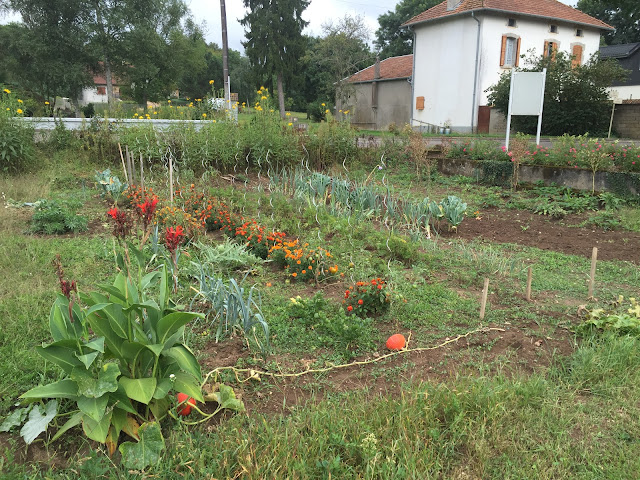 |
| Adorable French garden |
One night I camped in a closed campground right on the edge of a river. A dog had attached itself to me during the last kilometer walk that day and hung out with me while I set up my tent and ate dinner. Just as I was starting to worry I'd have to try and find his home he gave me a wag of his tail and trotted off back down the road, hopefully, home.
 |
| Wet deserted campsite |
 |
| Gorgeous Burgundian colored roof |
At this point, I had been walking in the constant drizzling rain for a few days. On the day before my rest day, I was walking to the medieval town of Gy. From a few kilometers, I was able to see the town, château and church midway up the hill.
 |
| The cow-whisperer cometh |
 |
| Give us attention! |
 |
| The town of Gy |
 |
| Beautiful flowers along the road |
In Gy, there was a large hill on which the old town was perched, and the surrounding area had more trees and hills. I stayed at a fantastic gîte with a French man who was walking the Compostela route to Spain. I had noticed that by this time in France many more people seemed to know what the Via Francigena was than further up north. Most people knew the Compostela route better just because it is more popular but more and more people recognized the Via Francigena.
The gentleman who checked us into our gîte that night gave us a lovely dinner that we could cook as well as food for breakfast! That night we had pasta with ragu sauce with brats and salad! It was delicious home-cooked goodness! We didn't even finish all of it, so I ended up taking the leftover pasta in a Ziploc bag for my lunch the next day (which I ate with my fingers-- no judgment)! Unfortunately, not much of my wet stuff dried that evening as it was still so wet and cool so the next morning I set off for Besançon with somewhat damp clothes.
 |
| The château of Gy |
By this time I was walking through forests and hilly land and the path was much more pleasant. It was still drizzling off and on, but the scenery was an enjoyable change. Besançon was the most beautiful city! I arrived on a very drizzly day and caught my first glimpse of the city center as I walked downhill through the suburbs and into the old city.
I had an unpleasant experience shortly before arriving in Besançon unfortunately. As I was trudging all damp and weary on a farm road, a passing car swerved into a nearby puddle and sprayed me with muddy water! I was shocked and shouted at the departing car, cursing them and hoping karma would lay a pothole or tree in their path. I had only experienced polite and pleasant people in France and so was utterly taken aback by this act. It put me in a sour mood for the next hour or so but I squashed my fury and tried to maintain a good mood. I was finding that my positive frame of mind was my strongest ally during this pilgrimage. Luckily this was one of the very few times where I felt attacked or disrespected during my whole pilgrimage. Most of the time I was treated with courtesy and respect!
 |
| Entering Besançon |
On to better things! Besançon was first recorded as a town in Roman times as the main city of the Gaulic tribe, Sequani. Built on a U-bend in the Doubs river with very steep mountains just behind it, Besançon had a fantastic defensive position. During King Louis XIV's reign, the brilliant military engineer Vauban built the citadel on a steep mountaintop overlooking Besançon. As I walked into the city, I could clearly see the citadel towering over the city, a hulking stone giant glistening in the rain. I walked down the south-facing hill and crossed the bridge on the Doubs River to enter the city. It had been a long day, so I promptly found a cafe and ordered a cappuccino (I found out that this close to Italy the cappuccinos were much more consistent). I was due to arrive at the religious house of Chapelle des Buis at 5, and I still had an hour and a half until then.
After a little while of drying off and getting warm (all this dampness had chased the heat away so well that I was now constantly cold!) I asked the barista where I could find the Chapelle des Buis. She looked at the name taken aback and told me that the Chapelle des Buis is a very small town (and religious house) high up in the hills behind the citadel and about a forty-five-minute walk entirely uphill from the city center! I was dismayed! I had finally warmed up and relaxed and was so tired! I had thought I was already where I needed to be for the day and the next day was my day off so I had already checked out a bit, but I got up and left anyway. I followed her directions and, sure enough, the climb up to the top of the hills was verrrrryy steep and tiring especially with a heavy backpack. (Later, when I read the directions in my guidebook for the section from Besançon to Ornans, they had written a note suggesting that walkers with heavy backpacks walk around that whole hill and meet up with the path later rather than climb because it was that steep!!)
 |
| Eclectic coffee shop |
Finally, I arrived at the little oasis at the top of the hill and met Frere Vincent. He was lovely (and spoke fluent Italian) and showed me to the pilgrims quarters which had a kitchen downstairs with food for me as well! From my bedroom window, I could see the lights of Besançon far below.
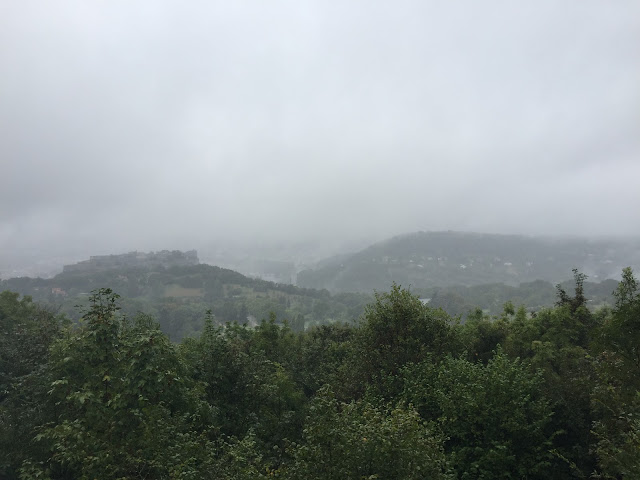 |
| The citadel and Besançon from Chapelle des Buis |
 |
| Besançon |
The next day it was raining quite hard but because I did not want to stay cooped up inside with nothing to do I decided to head into town. Unfortunately, the bus didn't run on Sundays, so I donned all my waterproof gear and walked down to the city. I was properly soaked by the time I even reached the city and most of everything was closed for the day, but I was still happy to be there.
 |
| The Citadel |
 |
| Looking down on part of the U-shaped curve of the river |
I stopped at a boulangerie and bought the biggest trousade (like a twisted chocolate chip croissant with a little bit of cream) I had ever seen for only 1.50 euros!! The first stop was the tourist center which was surprisingly tricky to find, but once I reached it I found out that today was the "free museum entrance" day so I could go visit the citadel for free!
 |
| Happier now that I've eaten! |
 |
| Tulip shaped chairs |
Unfortunately, the fine arts museum and archaeology museums were closed for renovations, so I climbed up the steep hill into the citadel. It was early enough that most people were still in church and the tour buses hadn't arrived yet, so the place was very quiet.
The Citadel is a vast fortress with two outer walls and dry moats. Inside there is a zoo, aquarium, noctarium, museum on the Resistance in France and a museum of the history of traditional life in the Franche-Comte region.
I visited the Noctarium first because I was fascinated by the concept. It was very cool! Inside the building, the time and lighting were set opposite to that of the outside world, so I went in at 11:30 in the morning and the time for the critters was 2:30 at night.
There were every species of mouse and rat imaginable in little ecosystems resembling where they would live in the wild.
 |
| Black rats |
 |
| House mice |
Next, I visited the museum of the Resistance which was well done and quite illuminating. They had a whole section showing the multiple papers and identities of secret agents during the war.
 |
| Monkeys in the moat |
After visiting the museum, I walked along the ramparts looking down on the incredible vistas of Besançon and the surrounding mountains. It was indeed a beautiful place!
 |
| The aquarium |
 |
| The zoo |
By that time I was quite wet and cold and needed some food and a hot drink! I made my way back up to the Chapelle des Buis and got myself a hot shower and a nice bowl of pasta!
 |
| Now I'm cold |
 |
| and very wet! |
 |
| Little wet hobbit |
The walk back up to the Chappelle was so wet!
 |
| Foggy walk uphill |
The next day I set off from the Chapelle des Buis in the drizzling rain and fog. I passed by the WWII Monument de Liberation which is a colossal statue on the hill overlooking Besançon.
 |
| Monument de Liberation |
 |
| Via Francigena markings on the trail |
It was insanely foggy that morning, and for several hours all I could see was fog and fields. It got a little bit depressing; I think this was because I saw hardly any life! It felt like I was the last person alive in this bleary opaque whiteness and that was quite depressing! I started to listen to an upbeat audiobook which made me feel better!
 |
| Cows in the mist |
Finally, I passed by this little chapel in the fog and trundled down a steep slope into a town. Even though I didn't see any people, I felt a little bit less alone among houses!
 |
| Giant worm! |
 |
| They even have rednecks in France!! |
In the afternoon I finally reached the town of Ornans and the Loue Valley. This region was stunning and picturesque with steep forested hills falling into the Loue river below.
 |
| Descending into the Loue Valley |
The Loue Valley is renowned for its striking beauty and quaint river towns. It is a major tourist destination in the summer. Unfortunately, it was very misty and foggy so I was not able to get many good pictures, but the area still held the awe-inspiring views for me!
 |
| VF this way |
The town of Ornans is a beautiful smaller town situated right on the river. There were houses right on the shore straddling the water, and the whole town was incredibly picturesque.
 |
| Toilet into the river! |
Ornans was the birthplace of the famous Romantic painter Gustave Courbet. There is a museum dedicated to Courbet in his birth house, but unfortunately, it was closing by the time I arrived. I was able to get my stamp there though!
 |
| Courbet museum |
 |
| All my stamps from this section |
Leaving the beautiful village, I continued walking along the Loue River through the valley.
 |
| Cute little mini horses |
I passed through a little river town where two French children walked with we to the edge of their village. They didn't speak English, but they were excited to see a stranger!
 |
| A 16th-century manor house and courtyard! |
I ended up camping in a closed campsite on the opposite side of the Loue from the tiny town of Lods. Medieval Lods had been on the same side of the river as me and further up the hillside (this was the sunny side) until the mill had been added. Then the town slowly shifted down towards the river and onto the opposite bank where it remains today.
The next day was clearer, and I could finally take better pictures. I crossed the river into the charming mill town of Lods.
 |
| Church garden gate |
I walked and climbed along the wooded hills until I reached the small town of Mouthier-Haute-Pierre which was another incredibly picturesque town!
Mouthier was founded by a religious order who had cleared the hills around to plant vineyards. I walked down the main street where all the houses had been rich wine merchant houses with wine cellars underground. Many of the houses in Mouthier had dates above the front doors showing how old they were.
 |
| A quaint lavoir |
Most of the older houses, which had belonged to the vine-growers were rebuilt after the fire of 1719. Many show a similar structure with cellars below, opening right out onto the street.
 |
| All the dates were from after the 1719 fire |
The lavoir in each of these little towns are old and adorable. Ever since I reached Langres, each small village had a lavoir where the women would traditionally come to wash their clothes and gossip, and the men would bring the animals to drink (and gossip). Most of these were quite lovely with flowers, and roofs still covered many.
 |
| This lavoir has lost its roof |
From Mouthier I walked down to the river and then followed it, climbing through the forested hills surrounding the gorge until I reached the Source of the Loue. It was incredible! The path was through the most verdant forest, and I could see the wild river below.
 |
| Waterfalls across the pathway |
The Source itself was spectacular! It appeared from a sheer cliff face! Medieval wagon ruts are visible on the walk uphill next to the Source, deeply engraved in the stone. These were used as a track to keep the carts in line on the slippery path.
 |
| The Source |
 |
| Wagon ruts |
From the Source, I continued walking south. At this point, there were hills and cows everywhere. The trees were also taller and older than the forests in northern France. During this section, I was listening to Bitter Greens by Kate Forsyth on audiobook. This was an incredible book, and I'm so glad I listened to it during this portion of my journey because now every time I think of this book I remember walking this beautiful and picturesque section of the pilgrimage.
 |
| Beautiful crocuses |
 |
| Cows cows cows |
That night I reached the city of Pontarlier– the birthplace of Absinthe. This city was quite attractive but I didn't get a chance to explore it at all as it was getting quite late and dark and I was wet and tired. I reached the campsite on the outskirts of Pontarlier just before sunset. The woman checking me in took pity on me and allowed me to stay in one of their chalets for the price of a tent pitch!! I had heat, a shower, a bed, and everything! It was so kind of her! All of my clothes finally dried for the first time in over a week!!
Blue skies broke through when I woke up! I walked to Château de Joux which was just 45 minutes away. This fortress has straddled the 100-meter craggy cliff over the pass into Italy since 1034. It's had an active military history withstanding sieges up until the 20th century. It resisted the German army for eight days in 1940 before it was overrun and its military career ended.
 |
| It looks over one of the only passes through the Jura mountains from France into Northern Italy |
 |
| A model of the chateau and the road through the pass |
The outside of the chateau was gorgeous and picturesque– the stuff of medieval dreams– but inside was a bit lame. There was not much in terms of the tour (which was in French) and the château was pretty empty.
 |
| Main gate |
 |
| The pass road |
 |
| Looking over the pass to a 19th-century fort on the opposite hillside |
 |
| Looking towards Switzerland |
 |
| Main courtyard |
 |
| Inner courtyard |
One part that was very cool in the château was the prison of the general Francois-Dominique Toussaint L'Ouverture. Toissaint was a black Haitian general who dared propose a Constitution for the colony, appointing himself as the governor. He then incited the Haitian rebellion and was deported by Napoleon to the Château de Joux where he spent his remaining eight months of life in a cell. After walking down a narrow and long winding stairwell into the bowels of the château, we were able to see his prison cell where he was imprisoned until his death in 1803.
 |
| Toussaint's cell |
After leaving the château, I followed an old railway through the Doubs river valley between mountains where the small town of Les Hopitaux-Neufs rests. The trip that day looked more and more like Switzerland, and I had to keep checking to see if I had crossed the border yet!
 |
| The large railway rocks were actually very hard to walk on with a heavy backpack |
 |
| The ski hill next to Les Hopitaux-Neufs |
 |
| The houses are beginning to look Swiss |
The town was at the bottom of a little ski area, and there were many ski-related stores (closed at this time of year) in the town. I camped that night even though I was quite damp, which made for a frigid night, though I did splurge on pizza. Hot food was a delicious and decadent treat since it was so rich and warm and such a rare splurge!
 |
| Les Hopitaux-Neufs |
On the way out of town the next day I met the most adorable kitten!!
 |
| Gahhhhh |
 |
| Another lavoir |
I entered Jougne mid-morning and walked down the hillside outside the town to the 9th century chapel of St. Maurice.
 |
| Jougne |
 |
| Just around that first hillside is the Swiss border |
The Chapel of St. Maurice was first built in the 9th century. Some form of the building would've been around on Sigeric's route when he traveled to Rome in 990! The oldest section of the chapel is the crypt which is still viewable though rather dark and creepy I must say! The outer part of the chapel dates from the 12th century and is defined by its stout and solid Romanesque walls.
 |
| Romanesque capital |
 |
| Entry into the crypt |
I had to pull my flash out and attach it to my camera in order to get any light down in the crypt. There was one tiny window near the top of the crypt that let in the smallest sliver of light but otherwise it was swallowed in shadow.
The walls and arches were quite cool. There were Carolingian capitals on the columns and the remnants of paint along the arches of the room.
Leaving Jougne behind, I pointed my boots south and within an hour I had crossed the French-Swiss border!
 |
| I like metal music. |
It was such a feeling of success to have finally crossed the Swiss border! I found it quite funny actually, I'd assumed there would be some checkpoint building or at least a sign on the physical border, but nothing was showing that I had just crossed into Switzerland. I was walking, checked my map, nope still in France, walked a bit further, rechecked my map, whoops I've been in Switzerland now for 15 minutes!
 |
| The border was somewhere between here and that town! |
 |
| First Swiss sign– those crazy tidy Swiss! |
Before I reached the city of Orbe, I walked over a deeply rutted Roman road in the forest. It was insanely cool! The stone was so deeply rutted that it was hard to imagine anything could've traversed the stone path! I was also very excited to see the exact road that Sigeric would have walked in 990, (let's be honest though, he probably rode a horse) that was 1026 years ago! It's incredible just thinking about it! The Romans built such sturdy and solid roads that this road must have been in use already for many centuries before Sigeric even trod on its surface! Not often did I find that I got to walk Sigeric's exact path-- often the Roman road that he traversed has transformed into the asphalt roads and highways of today!
 |
| Look at that rut! |
From the Roman road, I walked down a beautiful gorge between mountains. This pathway was tranquil and gorgeous, and I passed a few Swiss walkers out enjoying the day. There were several small and quaint towns strewn throughout this gorge with quintessential cute Swiss houses. The small village of Clées had a medieval tower rising from the center of town which I tried to walk to and explore, but I couldn't find a way to get closer to it. The school was getting out, and all the parents were waiting by the bus stop for their kids.
 |
| Clées with the medieval tower rising from the hill surrounded by trees |
I continued along the steeply wooded ledge until I reached the town of Orbe. This city lies right on the edge of a low glacial valley starting in Yverdon-les-Bains and Lac de Neuchatel to the north and flowing all the way to Lake Geneva.
 |
| Gorge trail |
 |
| The most expensive hot chocolate I've ever enjoyed |
 |
| Orbe |
 |
| Roundabout art outside the Nestle factory |
 |
| Nestle factory |
Across the valley from Orbe was another smaller town on the outskirts of which I camped that night. I woke very early the next morning for a long walk to Lausanne to finally connect with where I started my walk with my parents a month earlier!
 |
| Fuzzy wallaby |
 |
| Gorgeous sunrise |
When I arrived at Lake Geneva, I gave a little hip hooray feeling all successful and proud of myself. The first thing I did was visit the Olympic museum! This very wealthy and modern museum was super interesting and not at all like the museums I usually go to.
 |
| Arriving at Lake Geneva |
 |
| The Olympic flame |
In the 19th century, a Frenchman named Pierre de Frédy thought that athletics were a meaningful way to teach the youth lifelong lessons. He proposed reestablishing the ancient Greek Olympics, and in 1896 the modern Olympics were born.
 |
| Olympic flag from 1914 |
Most of the museum followed the revival of the Olympics in modern times.
There was a room with all the Olympic torches throughout the years– several of which seemed awkward and cumbersome...
Following this was a section about the opening ceremonies for the modern Olympics. There were examples of some of the cool costumes worn during these ceremonies as well as a projection of many of the more memorable ones.
Next, there were several rooms filled with uniforms and equipment from famous Olympic athletes throughout the years. I found Gold medalist Janica Kostelic's ski racing gear from the 2006 Winter Olympics!
 |
| The myriad bodies of Olympic athletes! |
There was a room with all the medals from all the Olympics as well!
After visiting the museum, I took a train to the end of Lake Geneva to the town of Villeneuve. Switzerland was so much more expensive without my parents!! (Thanks, guys!) I tried not to eat out at all and only ate what food I got at a supermarket. I'm happy I revisited Villeneuve because my parents and I had just breezed past the outskirts of the town when we walked this section- we had been running out of daylight and needed to reach Aigle. Villeneuve was a very beautiful little town and charming to walk around.
I left before sunrise the next morning because I wanted to capture the sunrise on the mountains and lake.
 |
| View of Montreux from Villeneuve |
I walked to Chillon Castle and took photos of the glorious sunrise and alpenglow. When I arrived at the castle the same man, who talked to us last time giving us tips for the hike was there and very happy to see me again!
 |
| First catch of the day |
 |
| The beginnings of alpenglow |
I revisited the castle because the last time it was super crowded, and we'd had to leave early. This time I took my sweet time visiting the castle and saw a few sections I hadn't seen before. The castle was less crowded as well as less hot, so the experience was much more pleasant!
Afterward, I walked back up the lake to Montreux and hung out along the lakeside while I waited for my train to Martigny.
I was delighted to be traveling this section again slowly and with a mind for visiting things I hadn't had time to before. During all the train rides I got to see the beautiful scenery again but from a different perspective and with the leaves beginning to change and Fall setting in. It was insanely cool when I could see a section and remember precisely that point where we had walked or what we had been discussing while we were there.
In Martigny, I visited some more of the Roman ruins and climbed the steep climb up to the Château de la Bâtiaz on the hill. It was just a small castle with nothing really inside it, but at the top of the keep, there were some spectacular views over Martigny and down the three separate valleys to Lake Geneva, the Grand Saint Bernard Pass, and Sion.
 |
| Several examples of trebuchets |
The castle was open to walk in, there was no one around and even though there was a restaurant, it was closed and empty.
 |
| Entrance into the castle |
 |
| The keep |
 |
| Torture chair |
 |
| Beautiful view of the bottom of the keep… |
 |
| Great defensive position! |
 |
| The top of the keep offered stunning views of the landscape |
 |
| Vineyards along the hillside |
 |
| View up the valley to the Grand Saint Bernard Pass |
 |
| Valley to Sion |
 |
| Valley to Lake Geneva |
After visiting Martigny, I took a train to Sembrancher where I was planning on camping at a campsite outside of town. The campground apparently had gone out of business at some point and is currently a mobile home park, so I ended up pitching my tent on an empty grassy lot, and an hour later another couple came up thinking this was a campsite. They spoke a little English and decided to camp next to me!
 |
| Camped underneath this rock... remember the pictures of it in my last post? |
I woke early again the next day and took a train to Orsiéres followed by a bus to the Grand Saint Bernard Pass. September 25 was the last day they had public transportation to the top of the pass, and I wanted to see the pass again hoping there would be snow so I made sure to schedule my walking so that I would arrive in time!
There was a little more snow primarily on the peaks around us, and the temperatures were definitely cooler, but I was still disappointed by the lack of snow, very uncommon for this late in the season. I loved the bus ride up the last section as I got to see our entire two-day walk from a different perspective. I snapped some photos of particularly memorable places and sent them to my parents so they could remember with me, it was a delightful experience for me.
 |
| You can see the lakeshore path we walked along. We took a break and dipped our feet in the frigid water in the ravine in the center. |
 |
| Our trail up the hillside |
This time around I stayed in the Hospice portion of the complex which was incredibly lovely. The brothers were sweet, and they cooked me a fantastic lunch and dinner that day and a filling breakfast before I set off the next morning.
 |
| The Hospice common room |
 |
| Out walking the Saint Bernards |
During the day a fellow pilgrim arrived, he was an Irishman named Billy. He had walked from Piacenza to Rome the year before and was walking from Martigny to Piacenza this year. We chatted about the upcoming route for me and the northern part for him, and it was nice giving and getting tips and tricks from a fellow pilgrim. I would see Billy several times more along the route from Aosta to Vercelli!
Late that night, after dark, a tiny little Italian arrived at the Hospice. He looked something like an Italian Jesus with his slight build (I think he was shorter than me!) long hair and beard, and soft-spoken, sweet manner. He was 23 years old and had left Canterbury on September 5!! He was trying to arrive in Rome by October 8!! It was insane! He walked over 60 kilometers a day, and his pack was a tiny little thing, weighing perhaps five kilos. He had a sleeping bag which he used most nights just sleeping in the wilderness with no tent! Billy thought he wouldn't be able to make it in time for October 8, as there were just too many kilometers left but he definitely could've made it by the 12th or so!! That is just insane to me! What took me four months to do (albeit in a leisurely fashion and with 17 kilos on my back) would take him a little over a month to do! Crazy Italians!
 |
| Saying goodbye to Switzerland |
The public transport from the pass to Aosta, unfortunately, had stopped on August 31 but I was told that a lot of people hitchhike their way down, so I determined to try my luck at this. The next day I started walking down to Aosta sticking close to the road. Within twenty minutes a delightful Italian farmer named Patrick had picked me up and (somewhat crazily) whisked me downhill towards Aosta. It was quite fun because he didn't speak a lick of English and I truly got to stretch out my Italian again. We talked the whole hour-long drive, and by the end, I was feeling much better about speaking Italian again. On the way, he stopped at a cafe where he met a friend and paid for my croissant and cappuccino!
That ride was an incredible end to the northern section of my pilgrimage, and I looked forward to the carbs and culture of the Italian section ahead of me!
Talk to you all next time in Italy!



















































































































































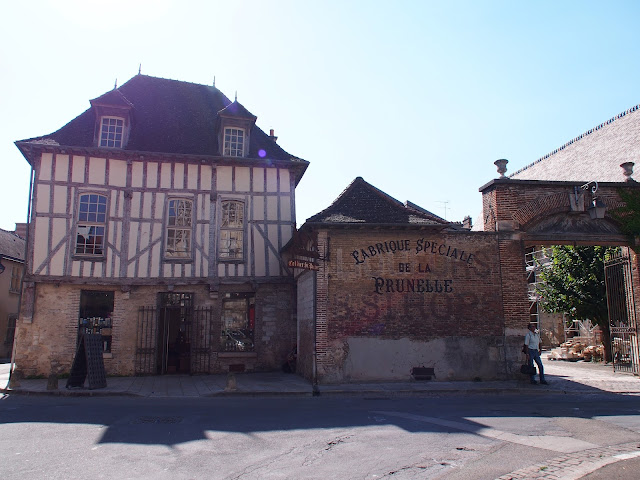











































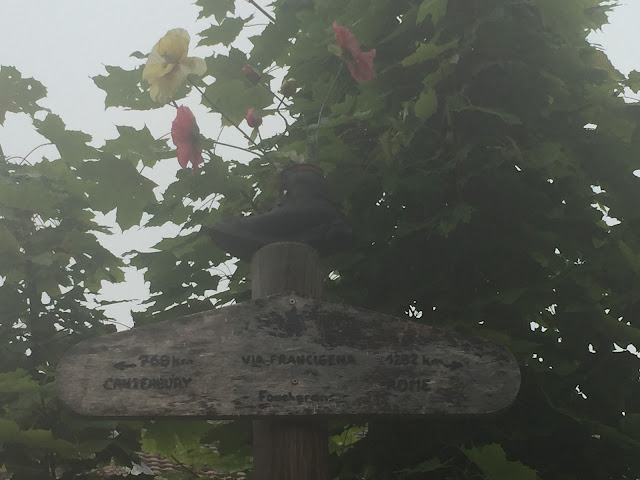



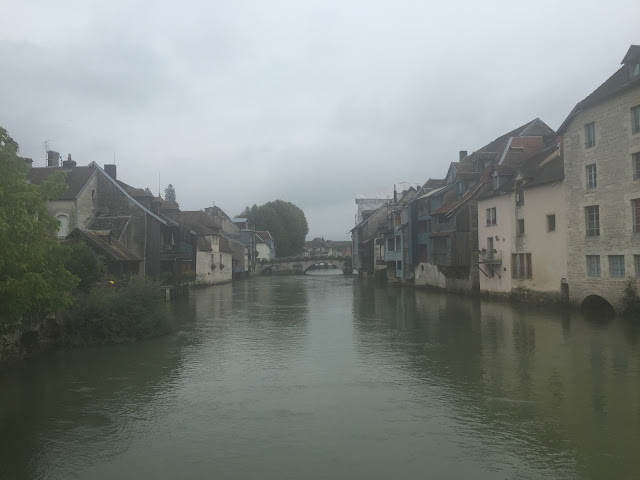











































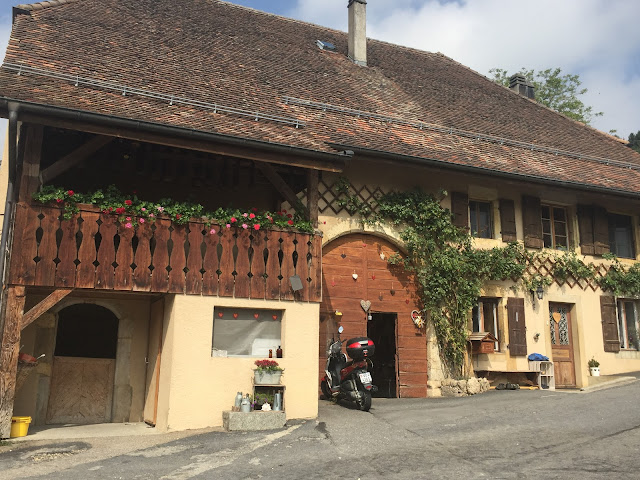
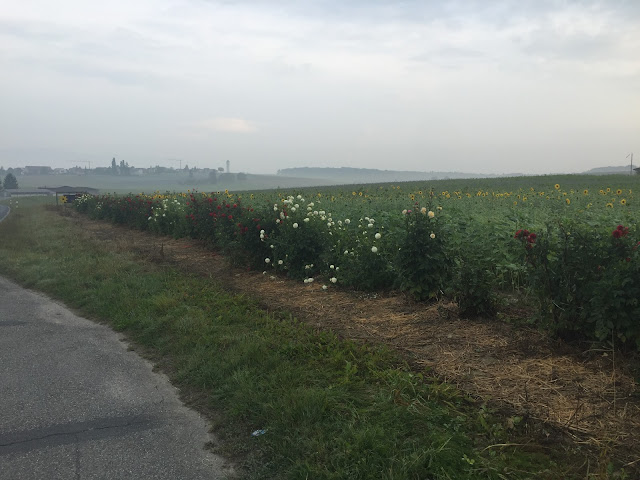













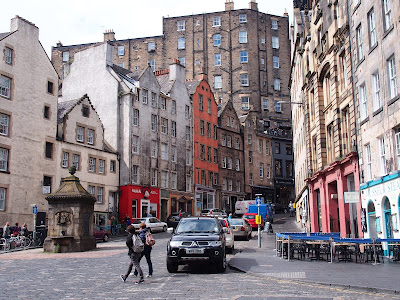
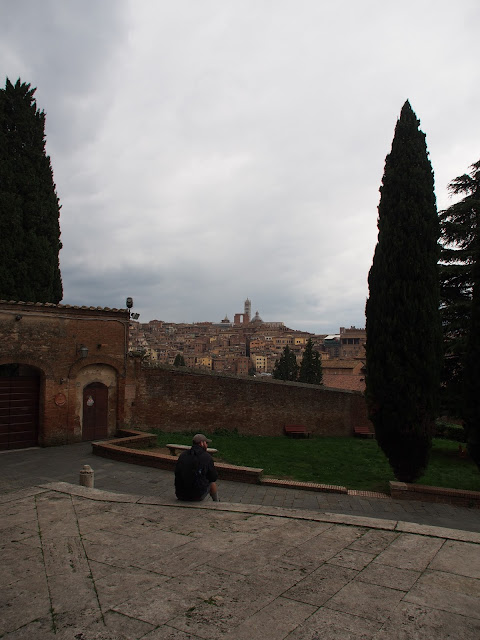



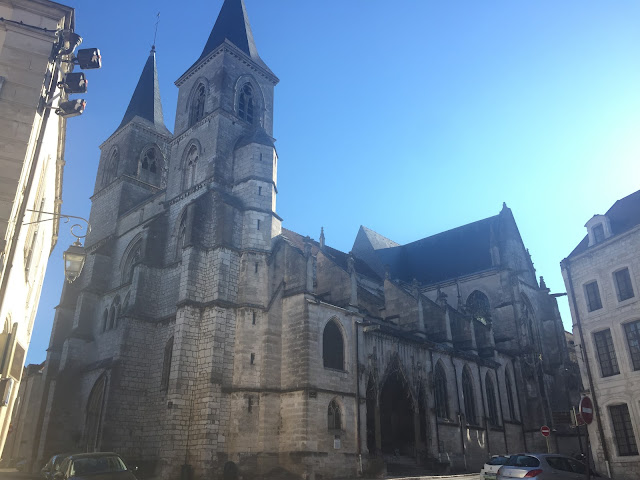

Hello Devon!
ReplyDeleteI just received (Jan. 11th) your postcard with the photo of you at the Vatican... BRAVO! You made it! When I met you in Châteauvillain, I was a bit worried you might run into snow going over the Gd St-Bernard Pass, but it turned out to be a very "dry" fall and winter here in Switzerland.
I unfortunately had to stop a week after our encounter; my aging body said that was enough for this time... Hope to return to the VF in April and do the 520 km remaining to get to Canterbury. Couldn't find your e-mail address... If you want, contact me at mine: jeff.berkheiser@gmail.com
All the best
Jeff
Hello Jeff!
DeleteI'm sorry to hear you couldn't finish your route this time around but I'm sure you'll make it this spring! Not to mention I think the weather would be cool and very pleasant to walk in that time of year!
My email is devonmengle@gmail.com. I completely forgot to add it to my postcard! Blast!
I'll try to keep in touch every so often and you must let me know how your spring trek goes!
I loved this experience so much I already want to do another pilgrimage!!
Cheers!
Devon
Devon, As always I love reading about your trip!! Your dad and I will have to visit Troyes as it looks amazing! I love to hear about the people you have met along the way! From the locals who reach out to help a complete stranger to the pilgrims who are an inspiration and support system along the way! They all sound amazing!! Love Mom
ReplyDelete